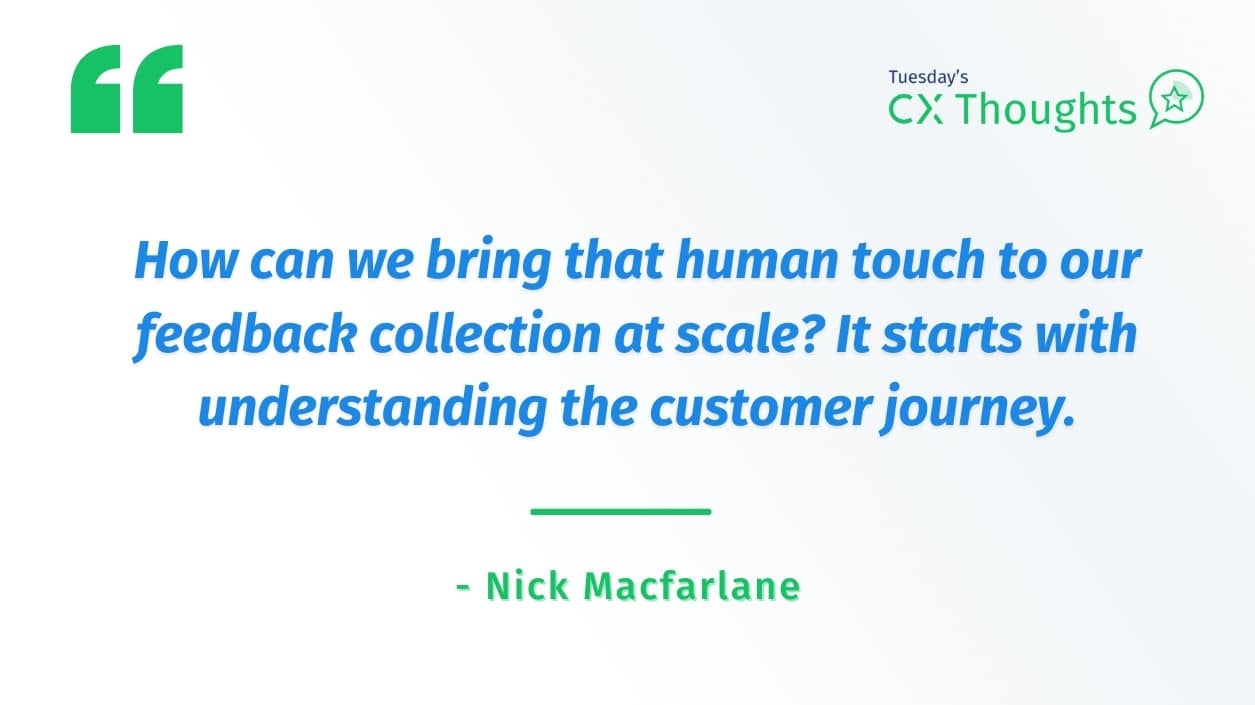
I’m just back from a lovely week’s holiday in the South of France. Sunshine, family, pastries, copious Rosé, and you guessed it, even more, customer satisfaction surveys from the airline, the car hire company, the villa rental company, the list probably goes on.
And what do these surveys have in common? They were all cold and transactional, asked me loads of questions, and didn’t really focus on my “Why” for using those services or consider any of the context around my experience. None of those experiences were bad, one flight was slightly delayed but everything else worked perfectly well. Yet still I was not overly inclined to complete the survey and this is true for 70% of people we send surveys to.
But here’s the thing: the best experiences I had during the week didn’t come with a survey, but the folks who provided them will know I was satisfied. I’m thinking of the amazing patisserie my dad and I got up early to visit every day. They recognized us with a smile on the second day, and by the sixth day, they greeted us like long-lost friends and recommended other things for us to try.
Or the Uber driver in Marseille who gave me a passionate history of Marseille football club while navigating the numerous road closures on account of the 14th July celebrations, recommending a great restaurant, and arranging to pick us up later, knowing wait times would be long, to ensure we didn’t miss our flight.
What’s the common thread, and how did they know they’d done a good job? The human touch.
They tuned in, clocked what was important to me, and made it happen. Ok, they didn’t get any direct survey feedback, but they got a tip and 5-star reviews. And they didn’t need to ask me on a numeric scale if I’d recommend them!
So, how can we bring that human touch to our feedback collection at scale? For me, it starts with understanding the customer journey and thoughtfully designing where you want to capture feedback, taking into account what the customer will be thinking and feeling at each point.
Then, use what you know to build rapport and make the surveys themselves short, punchy, engaging, and focused on open-ended comments that feed your conversational analytics. To make them engaging, I have previously used photos of real team members sharing their own experiences, which led to an over 200% increase in response rates. Never mind the huge amount of fun we had on photo shoot day!
With an approach like this, you’ll gather a wider selection of data than a one-off survey would provide and hopefully tap into some of those impulse, off-the-cuff, human heartfelt comments, both good and bad. But the point is at least you’ll know!
What’s more, if you automatically pipe the data from those surveys back into the view of the customer journey, as you can with QuestionPro, and have it updated on a regular basis, you’ll have a prebuilt storyboard of what your customers think about your business to inspire action around what needs to improve.
Is there something wrong with your customer experience?
When you complete an honest assessment, the outcome can be beneficial, particularly for your Customer Experience program.
Take five minutes and complete an audit for your organization here.
You may discover a gap in measurement, an opportunity to improve a process, where an organizational shift needs to take place or an opportunity to win a greater share of your customers’ wallets.
We all want that bigger “return.” In this situation, the worst-case scenario is that you’ll get some information that will help your organization since completing this audit is free and without obligation.







